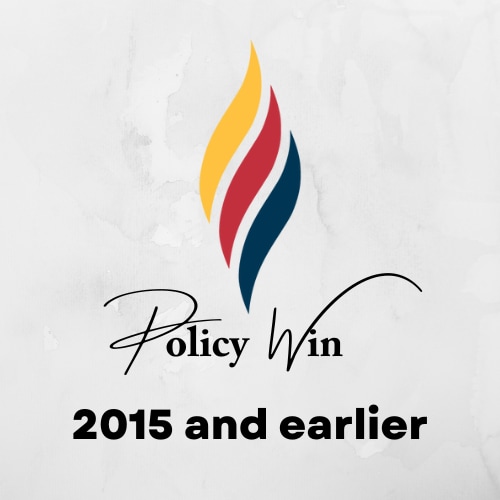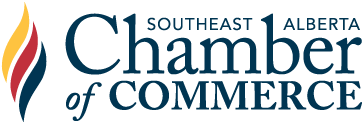Improving Communication and Processing in the Alberta Disaster Recovery Program and Alberta Emergency Management Agency

Improving Communication and Processing in the Alberta Disaster Recovery Program and Alberta Emergency Management Agency
Provincial Policy
Background
In June 2010 severe flooding in southern Alberta resulted in the activation of the Disaster Recovery Program (DRP). This program is designed to provide financial assistance to businesses, farms and residents who are victims of disasters. Persistent delays in the response of this program to provide much-needed funding have caused serious disruptions to businesses in the affected regions and overall progress of commerce.
The Alberta Emergency Plan dictates that DRP shall exist to “provide financial assistance to local authorities and their citizens who incur uninsurable loss and damage as a result of a disastrous event.”1 The program is administered by the Alberta Emergency Management Agency (AEMA) and is authorized by the Minister of Municipal Affairs.
Criteria for eligibility in the program according to the plan are that: (a) the event is considered extraordinary, (b) insurance is not reasonably or readily available, and (c) there is evidence that the event is wide spread.
The program covers, in addition to homeowners, municipalities and non-profit organizations, small businesses, where the majority of owners operate as the day-to-day manager of impacted assets as well as deriving a minimum of 20 per cent of their gross personal income from those assets. The program covers 100 per cent of eligible loss or damage for uninsurable property. It does not cover loss or damage that:
- Was reasonably and readily insurable.
- Is recoverable through feasible legal action.
- Is recoverable through another government program.
- Was a pre-existing condition.
- Is considered an ordinary or normal risk of business, trade, calling or occupation, including loss of income or interest charges.
- Was incurred by a large business.2
As the program focuses on restoring uninsurable property, it provides a safety net for business owners who have no private recourse for the impact that disasters may have to their business.
As such, this funding is entirely necessary for the functioning of commerce in the aftermath of such events. Concern has been expressed regarding the amount of time it has taken for the Alberta Emergency Management Agency to process applications for funding. This can delay repairs for businesses and farmers who cannot afford to pay for repairs upfront and require government assistance to return to regular production.
In addition, concerns over a lack of transparency have been expressed. Cheques made out to successful applicants have not included any explanation or justification for the amount. Some applicants are unsure of how damage has been appraised.3 Based on these expressed concerns, three central problems have been identified within the current structure of the DRP:
- The Disaster Recovery Program has not fully dealt with the difference in complexity between homeowner, agricultural, and commercial business disaster assistance claims.
- Communication between claimants and the AEMA is inconsistent and without a clear service level expectation.
- Program administration is governed by ambiguous policy wording which has led to payment delays or inconsistent subjective compensation awards.
Recommendations
The Alberta Chamber of Commerce recommends that the Government of Alberta:
- Create a comprehensive general guidelines document, which includes, but is not limited to:
- An overview of the program.
- An explicit outline of the process for residential, small business, large business, agricultural operation, and municipal government claims.
- A description of detailed coverage for residential, small business, large business, agricultural operation, and municipal government claims.
- A detailed eligible and non-eligible description and breakdown for residential, small business, large business, agricultural operation, and municipal government claims.
- Implement a service level program that details the program’s:
- Communication and transparency policies.
- Claims procedure.
- Claim account processes, including a claim numbering system in order to facilitate easy accessibility to file information by phone, in person, online, or through mail-out updates.
- Point-of-contact updates which dictate that claimants are updated once every 10 days on the status of their claim.
- Policies for consistent implementation and recursive measures should there be a failure to achieve the standards set forward.
- Include in the creation of the comprehensive general guidelines document specific language for all procedures including, but not limited to, qualifications on eligibility, claims procedures, claim re-assessment procedures, and procedures for issuing reimbursements for expenses and payment of claims.
- Review all related policy documents in order to remove all ambiguous language with the intent of streamlining the Disaster Recovery Program and facilitating faster service.
Resources
- Alberta Emergency Management Agency. (2008). Alberta Emergency Plan. Section 5.2 “Disaster Recovery Program”
- Alberta Emergency Management Agency. (2009). Disaster Recovery Program Information
- Slade, G. (2010). “Flood relief in private hands”. Medicine Hat News. November 6
Date Approved: 2011
Date Completed: 2014
